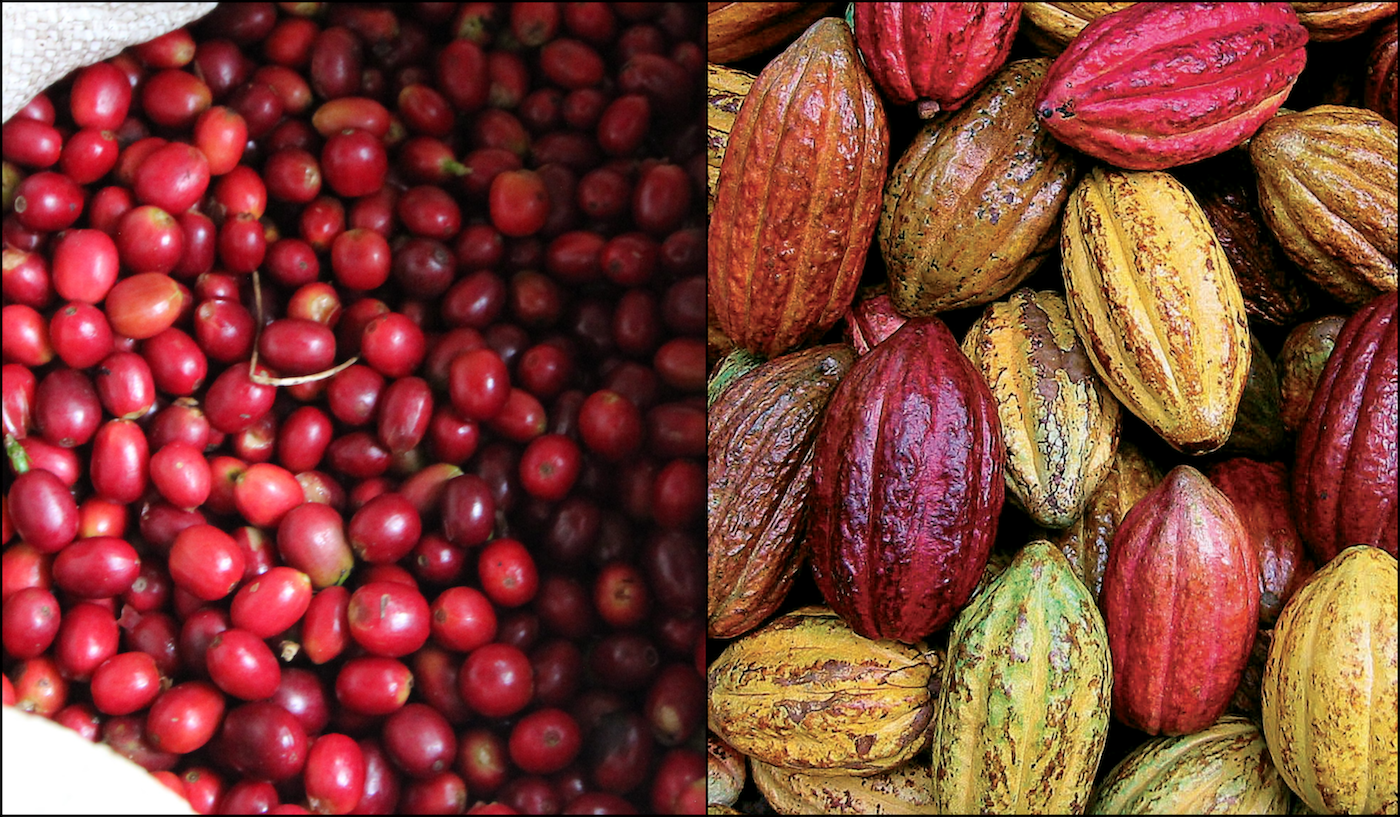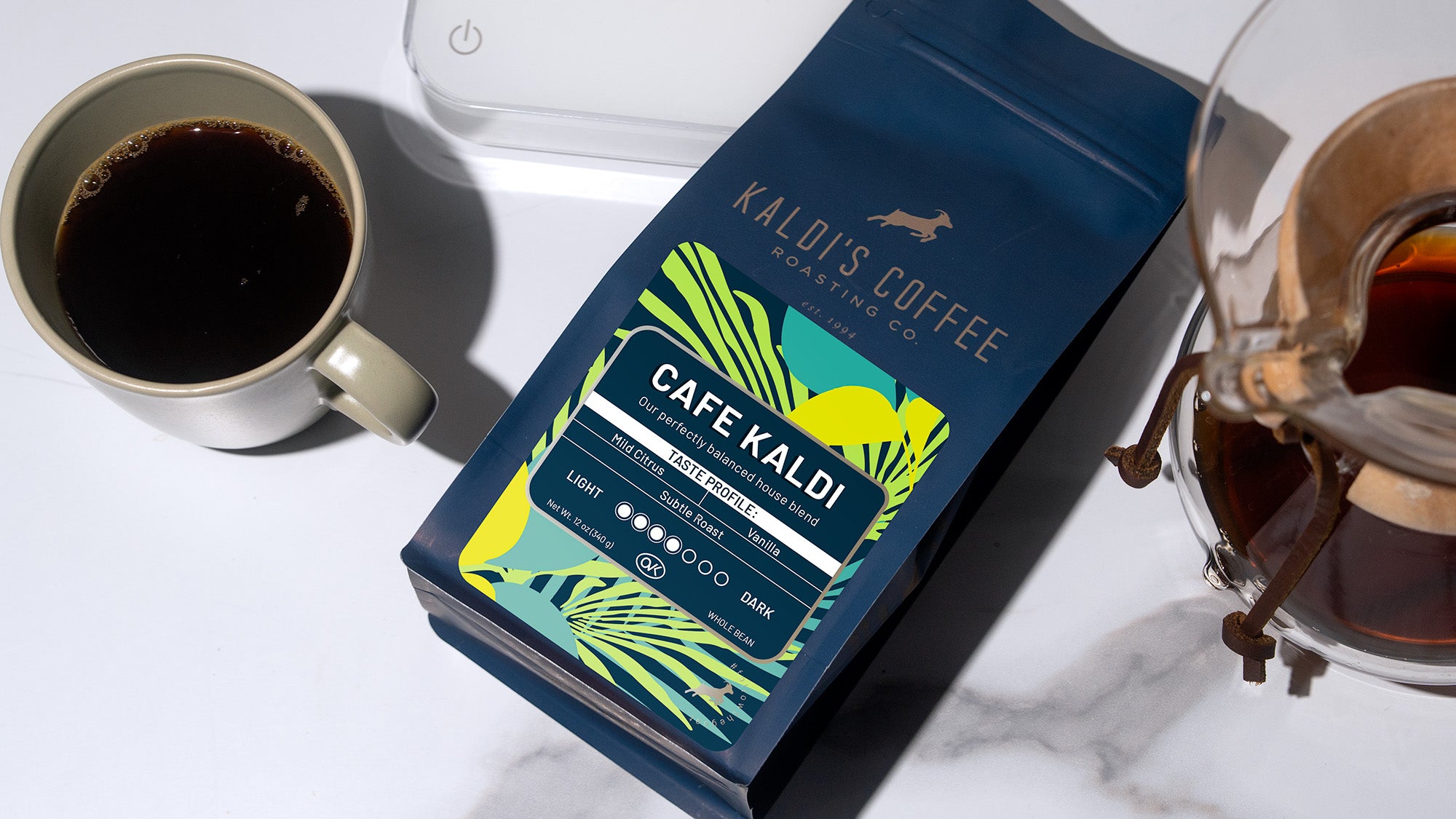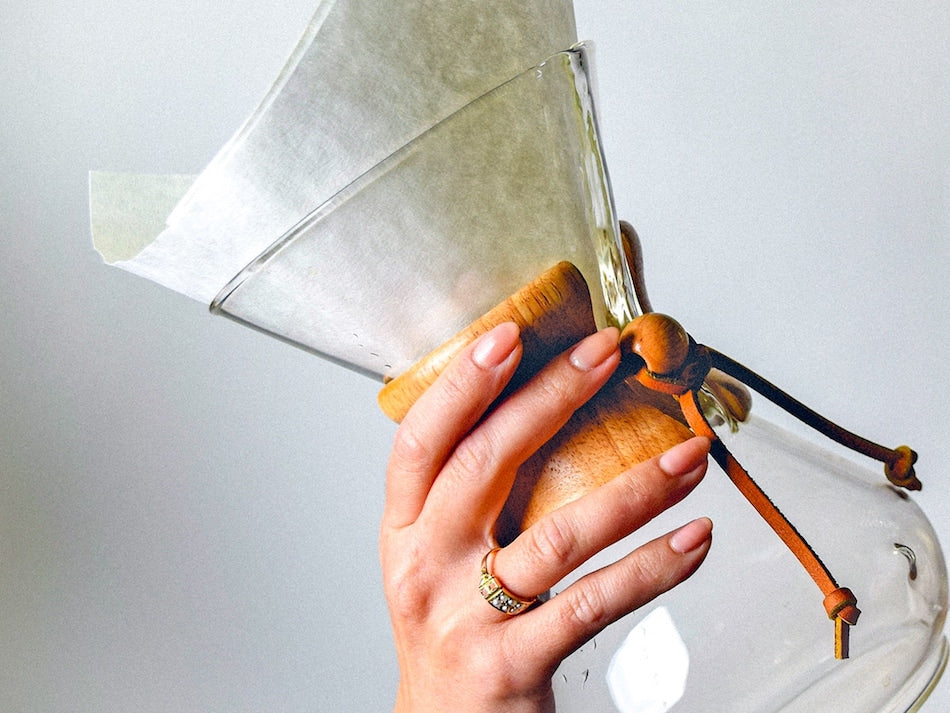Written in collaboration with Honeymoon Chocolates
In this 1st of 3 blogs, Kaldi’s Coffee teams up with our newest St. Louis-based partner, Honeymoon Chocolates, to give you the scoop on two of the greatest things humanity has ever discovered: coffee & chocolate! These two remarkable food products share a lot in common and we hope you come away with an increased understanding of our joint values and missions.
In today’s blog, we’ll cover the common origins and similar-but-different processes of creating the raw goods that we import from around the world: cacao nibs and green coffee beans.
The next two blogs will talk about:
- The differences in final processing of roasted coffee and chocolate
- Shared challenges we face in keeping specialty chocolate and coffee sustainable

TREES OF LIFE
The magic of a decadent chocolate bar or perfect shot of espresso both start with a humble tree.
Chocolate comes from cacao, the seed of the cacao tree, an evergreen tree whose fruit buds right from the central trunk, and is indigenous to Central and South America. Once unique to the ancient Aztec and Maya empires, it is now most commonly cultivated in West Africa and Indonesia. Specialty chocolate, though, is changing that. Honeymoon Chocolates sources their cacao beans from Haiti, Peru, and Colombia, and is even planning on getting cacao from India soon.
Coffee is made from the seed of the fruit of the coffee tree, which looks more like a very leafy large bush or shrub, and is native to Ethiopia in Eastern Africa. From there, it spread across the sea to the Arabian peninsula, and south to Kenya and the African Great Lake Region. It has since spread to Southeast Asia and Indonesia, and Central and South America. Most commercial coffee is produced by Brazil and Vietnam, but superior quality specialty coffee is putting the names of smaller farms and co-ops from Rwanda, Guatemala, Peru, and beyond on the map.

Seriously, is there anything trees don't give us?
PULP FRICTION - TRANSFORMING SEEDS
Both cacao and coffee undergo a complicated process to transform them from seeds into the energizing beverages and tasty bars we know and love. Both cacao and coffee actually have pretty similar journeys from tree to shipping container, each undergoing a form of fermentation and removal of outer layers to expose and create the dried seed within.
First, the fruit must be harvested. A coffee tree’s cherry harvest occurs over several months as the cherries are hand-picked carefully to ensure ripeness. A cacao tree, too, must be harvested slowly, as each of its cacao pods ripens at a slightly different rate. Cacao gets more exciting than coffee picking, though, thanks to the use of a machete and even special hooks for reaching too-high cacao pods!

Harvested coffee cherries are then processed in one of several different ways: natural (dry), washed, and honey process coffees are the 3 most common methods. Fermentation of the seed within some portion of the fruit will occur in all methods. However, the varying means of removing the fruit and how fast this is done are what give natural and honey process coffee their distinctive characteristics versus the more common washed coffees.
Coffee fermentation typically occurs in large ceramic tanks, and some amount of water. The process usually only takes a few hours, to a maximum of a day and a half. The fermented coffee beans finally shed their mucilage - the sticky inner layer of the cherry fruit - and is ready for sun drying.
Cacao pods, unlike coffee, have but one destination upon picking - a wooden fermentation box covered by banana leaves. The pods are quickly broken open and the fleshy pulp within is inspected for quality. The pulp-covered seeds meeting quality standards are placed in the fermentation box and kept in there for 3 to 5 days, occasionally being manually turned. The quality of a harvest of cacao can be quickly assessed by the quality of its fermentation.

The fermentation process is exothermic - it puts out heat, the mass of cacao reaching a temperature of 110-120 Fahrenheit. The pulp surrounding the cacao beans essentially “sweats” off, leaving only a thin residue that becomes papery, like a skin (this later gets removed following roasting). This process, like with coffee, is responsible for much of the flavor profile of the resulting chocolate. Following fermentation, the cacao beans are carefully dried, preferably in the sun, then tested for quality before making its way to Honeymoon.

TASTINESS IN PROGRESS
When you sip a latte, or enjoy a mug of hot cocoa, you are tasting the beauty of the Tropics: the warmth of the sun, the lushness of the forests, the cool mountain breeze. You’re also tasting the hard work and expertise of Honeymoon Chocolates’ craft chocolatiers, and Kaldi’s Coffee’s specialty coffee roasters. Join us in Part 2 of this collaboration blog as Honeymoon Chocolates and Kaldi’s Coffee discuss what happens to the green coffee and dried chocolate beans that arrive at our respective production facilities in St. Louis, MO.
-
Shop chocolate on Honeymoon Chocolates website.
Shop coffee blends on our website.
-
READ NEXT:
HOW ARE COFFEE AND CHOCOLATE MADE? - PART 2 OF 3
Related Content:
- Coffee Processing and Your Cup | Kaldi's Coffee Blog
- Spider Charts and Flavor Calls: Choosing Your Next Single Origin Coffee | Kaldi's Coffee Blog
- Coffee Sourcing at Kaldi's Coffee | Education Page








